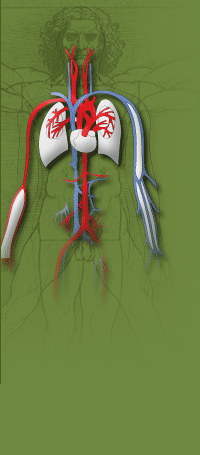|
The creation and maturation of fistulas for a greater percentage of dialysis patients has come to be understood as an important goal and a major quality advance. One contributing factor in allowing more fistulas to be created these days is ultrasound mapping - identifying veins that are not always readily apparent on clinical exam, and hence overlooked. All too often I will examine a patient's PTFE graft with ultrasound for some problem and find a large cephalic vein running underneath the graft. "Why didn't they do a fistula?" I ask myself. Many times it is obvious that because of thick skin or chubby forearms, the vein was not palpable or visible, and so the opportunity was missed. Many experts are recommending that ultrasound mapping be done prior to surgical consultation: that the nephrologist examine the patient, make a decision about the most appropriate vascular access, and then communicate that expectation to the surgeon. Certainly, there may be surgeons in most communities who can benefit from guidance regarding a procedure they do less frequently, and other surgeons whose care of the dialysis patient is improved by having their feet held in the fire by the nephrologist. Each nephrologist must make an assessment of the service their patients get from the local surgeons, and adjust their practices accordingly. For many, more nephrological involvement in the access process may mean better results. As the importance of vascular access for dialysis is increasingly recognized, however, more surgeons are becoming sophisticated in the assessment and treatment of the dialysis patient. In larger metropolitan areas there are even surgeons, like myself, focusing on this area as a large or exclusive part of our practices. For many of us, the office ultrasound is an essential extension of the physical examination, used in every new patient assessment and in the many of the follow-up visits. In the new patient assessment, the office ultrasound is used to map the veins - measure the size, identify branches to be used in the anastomosis, identify or exclude clot from intravenous needle injury or other factors, follow the course of the vein, and identify the outflow. An attractive large vein at the wrist may lead to a long stenotic stretch in the midforearm, dooming a wrist fistula, and setting up the patient for an early failure that will color his or her perception of access surgery. Futile operations can be predicted with better screening of the anatomy, and can thence be avoided. The high-yield procedure can be correctly identified in the initial office evaluation with the use of ultrasound in most instances. Knowledge of the runoff allows long-term planning. A wrist fistula that does not mature sufficiently to be usable may still develop the antecubital veins. A forearm graft may then succeed where it would not have prior to vein growth. On the other hand, a graft in the forearm correctly placed can grow the cephalic vein in the upper arm, allowing an upper arm fistula at a later date. Or, an antecubital fistula useless for cannulation may grow a basilic vein to sufficient size and toughness to allow for transposition. All these stepwise approaches to providing vascular access are only made possible by an expanded knowledge of individual venous anatomy beyond what is easily visible. We tend to focus on the veins, but arterial status can also be important. A huge vein at the wrist coupled with a two millimeter calcified radial artery in an older diabetic woman may be eagerly jumped on by the unwary surgeon who can be fooled by a "good pulse" in a superficial incompressible artery. This can be a recipe for intraoperative agony for the surgeon, early fistula failure, insufficient flows in any fistula that does develop, or digital ischemia due to steal. As another example, up to 15 or 20% of patients have a brachial artery that bifurcates in the upper arm rather than below the elbow, and a higher rate of access failures is noted in these patients. Forewarned is forearmed, as they say, and pre-operative knowledge of the anatomy derived from ultrasound examination may help identify the high-yield option for the patient without frustrating and time wasting exploratory surgery. The precision of measurement achieved by a trained vascular lab technician will most often eclipse that of the surgeon, but in those practices where surgeons are adept enough to do a basic vascular ultrasound exam, a step can be eliminated, and time and money saved as the patient comes directly to the surgeon without stopping at the vascular lab. In my practice, I refer the patient for a formal vascular lab exam only if my exam precludes a fistula, for an ultrasound "second opinion". One important consideration is also the change in vascular tone that can occur due to room temperature, hydration status and other factors. A spastic vein invisible on one day may become a soda-straw on another. I routinely request an intrascalene block for my vascular access operations where possible not because it gives the best pain control (it doesn't always), but because frequently the vasodilatory effects of the sympathetic block dilates the veins sufficiently to make the operation technically easier, to allow a fistula to be created at a lower level than previously thought possible, or even unveil a fistula option where a graft was planned. For this reason, the vascular access patient is almost invariably re-examined with a portable ultrasound in the operating room after the block is placed, and immediately before prepping the skin. After the fistula is created, it will be reexamined with ultrasound on virtually every visit - measuring the size as the fistula develops over time, identifying branches that may need to be ligated to allow appropriate development of the fistula, or finding stenoses that indicate a need for balloon fistuloplasty. Measuring flow may be useful in the assessment of some fistulas. Measuring acceleration of flow may pinpoint an important stenosis. Tortuousity or depth-greater-than-width of a fistula on ultrasound may identify areas where cannulation will be difficult. Some deep fistulas will require superficialization or transposition prior to usability, and this assessment is aided by the ultrasound examination. Once the fistula is judged usable, we frequently offer the patient the ultimate guide to cannulation. A digital photograph of the arm is taken and printed, then the fistula drawn on the printed photo with the assistance of an ultrasound examination. The course of the fistula is indicated, size at various points, depth below the skin at various points, location of branches, suggested areas for cannulation, and suggested areas to avoid are included. The photo-diagram is then xeroxed with several copies given the patient and one for the chart. Making the access more understandable for the Dialysis center personnel can reduce infiltration and make everyone's day a little better. Outflow veins of grafts are also ultrasound-examined when those patients are seen. The desirable result of having a graft placed is not just earlier usability, but the opportunity to develop a higher-level fistula option over time. When a patient understands that the long range plan is to abandon a forearm graft when it finally wears out and transit to a upper arm fistula, then eventual failure of the graft is not such a calamity, but a long expected opportunity to move on to something better. In short, the availability of portable and affordable (less than $30,000) office ultrasound machines allows the surgeon to see under the skin more easily than before. Access planning and evaluation is improved, and so are results. Not all ultrasound examinations will be billable, but many will, and the machine pays for itself over time in a practice where it is used frequently. In my mind, office and intraoperative vascular ultrasound is an indispensable tool for the surgeon who wants to be effective in the management of the vascular access patient. |
| Return to patient education page |
 |
||||||||||||
|
|
||||||||||||
|
||||||||||||

